A Detailed Look At Hyperkeratosis in Dog Paws, Signs & Treatment

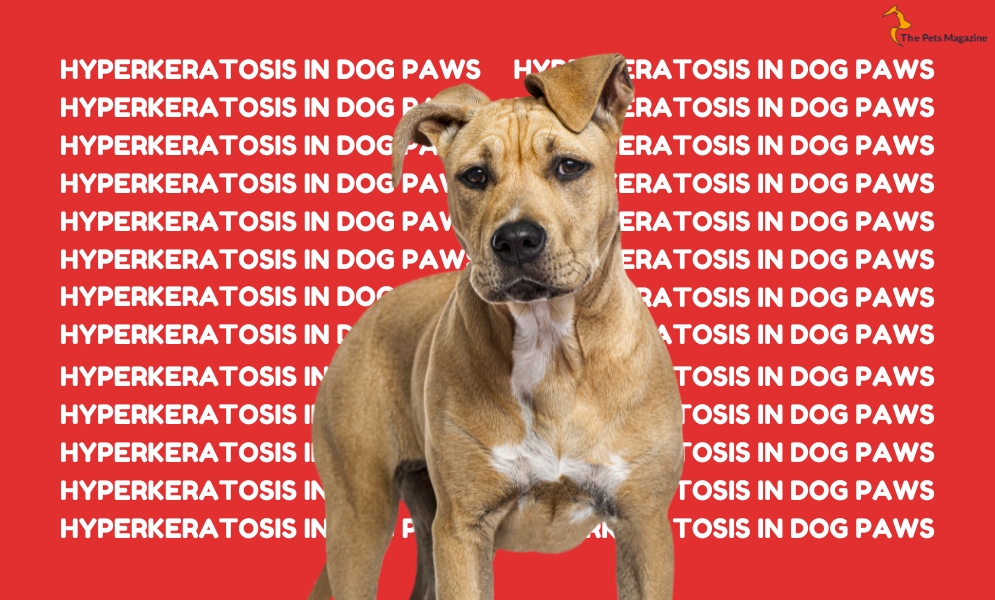
Is your furbaby limping slightly while walking, but there’s no sign of any injury or sprain? If you are confused about what is wrong with your dog, then here’s a tip. Check your dog’s paws carefully. Does your dog’s paws feel a bit rough and hard, and is the skin cracked, too?
If the answer is yes, it means your dog has a condition called hyperkeratosis. There is no cure for it, but the good thing is that with proper management, you can make sure it doesn’t become a big issue.
Moreover, Hyperkeratosis dog paw is harmless and has no long-term consequences. In this article, we will break down what Hyperkeratosis in Dog Paws is, how to spot the signs, and most importantly, how to treat it. So, let’s get started
What is Hyperkeratosis Dog Paw?

Hyperkeratosis is a condition that affects the paws of dogs, causing them to develop thick, calloused, and crusty patches. This happens because the skin cells present in the outermost layer of the skin, also known as the stratum corneum, start producing too much keratin. It’s a relatively common issue in dogs of any age, breed, or size.
When you notice these crusty, discolored patches on your furbaby’s paws, it’s a sign that something is amiss. Hyperkeratosis can be frustrating for both you and your furry friend. However, knowing about the most common culprits of hyperkeratosis dog paw will help you to manage the situation better.
Top Causes of Hyperkeratosis in Dog Paws
Hyperkeratosis in dog paws can arise from various factors, some of which are within your control, while others are not. Here are some of the most common causes:
- Environmental factors: Exposure to harsh surfaces, such as concrete or rough terrain, can lead to excessive friction and pressure on your dog’s paws. This can trigger hyperkeratosis as a protective response.
- Allergies: Allergies to certain foods, environmental allergens, or even flea bites can cause inflammation and irritation in your dog’s paws, leading to hyperkeratosis.
- Nutritional deficiencies: A lack of essential nutrients, such as zinc, vitamin A, or essential fatty acids, can contribute to the formation of hyperkeratosis in your dog’s paws.
- Hormonal imbalances: Hormonal imbalances, such as those associated with hypothyroidism or Cushing’s disease in dogs, can disrupt the normal shedding process of the skin. This leads to the buildup of keratin and the development of hyperkeratosis.
- Bacterial or fungal infections: Infections caused by bacteria or fungi can trigger an inflammatory response in your dog’s paws. It results in the formation of hyperkeratosis as a secondary condition.
Signs and Symptoms of Hyperkeratosis in Dog Paws
You need to recognize the signs of hyperkeratosis in your dog’s paws. It will enable you to know whether prompt treatment is required or not to prevent further discomfort. Here are some common symptoms that you should watch out for:
- Thick, calloused patches: The most obvious sign of hyperkeratosis is the presence of thick, crusty, and discolored patches on your dog’s paws. These patches can vary in size and may be accompanied by cracking or peeling of the skin.
- Lameness or reluctance to walk: If your dog cut paw pad due to hyperkeratosis, you may see them limping slightly and trying not to put weight on the affected paw(s). Your dog will also be reluctant to go outside to play or for walks.
- Excessive licking or chewing: Your dog may lick or chew at the affected areas excessively in an attempt to alleviate discomfort or irritation.
- Bleeding or oozing: In some cases, the hyperkeratotic patches may crack or bleed, leading to oozing or the formation of scabs.
- Odor: If a secondary bacterial or fungal infection accompanies hyperkeratosis, you may notice an unpleasant odor emanating from your dog’s paws.
Hyperkeratosis in Dog Paws: When to See a Vet?
While hyperkeratosis may seem like a minor cosmetic issue, it’s essential to seek veterinary attention promptly if you notice any of the following signs:
Severe or Widespread Hyperkeratosis
If the hyperkeratotic patches are large, widespread, or covering a significant portion of your dog’s paws, it’s crucial to have them evaluated by a veterinarian.
Lameness or Reluctance to Walk
If your dog is exhibiting lameness or a reluctance to walk or bear weight on the affected paw(s), it’s a sign of significant discomfort and requires prompt veterinary attention.
Bleeding, Oozing, or Signs of Infection
If the hyperkeratotic patches are cracked, bleeding, or showing signs of infection (such as pus, swelling, or foul odor), seeking veterinary care is essential to prevent further complications.
If you’ve tried home remedies without success, or if the condition seems to be worsening, it’s time to consult with your veterinarian for professional treatment. Remember, early intervention and proper treatment can prevent the progression of hyperkeratosis and ensure your dog’s comfort and well-being.
Diagnosing Hyperkeratosis in Dog Paws
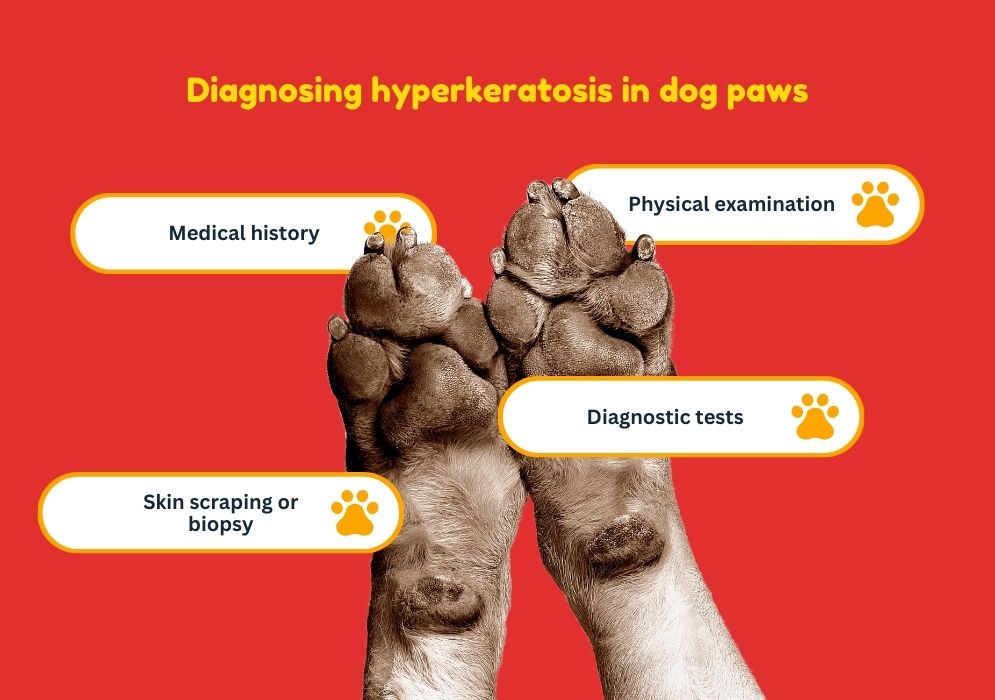
If you suspect that your dog is suffering from hyperkeratosis, it’s essential to seek veterinary attention. They can provide accurate diagnosis and appropriate treatment depending on the severity of the condition. Your veterinarian will likely perform the following steps:
Step 1: Physical examination
When you take your dog to the vet’s office, they will first carefully examine your dog’s paws. They will check the paw for the presence of thick, calloused patches, cracking, or other signs of hyperkeratosis.
Step 2: Medical history
Your vet will ask about your dog’s medical history, including any prior injuries, allergies, or underlying conditions that may contribute to the development of hyperkeratosis.
Step 3: Skin scraping or biopsy
In some situations, your vet may perform a skin scraping or biopsy to rule out other conditions, such as fungal or bacterial infections, or to confirm the diagnosis of hyperkeratosis.
Step 4: Diagnostic tests
Depending on the suspected underlying cause, your vet may recommend additional diagnostic tests, such as blood work, thyroid testing, or allergy testing.
Treatment Options for Hyperkeratosis in Dog Paws
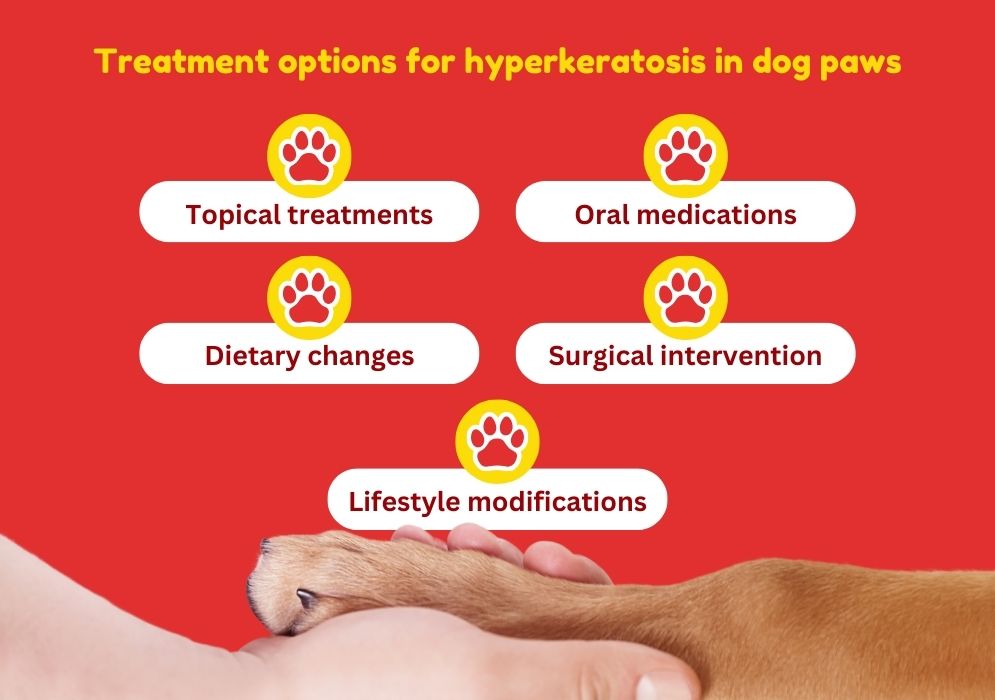
Once your veterinarian has confirmed the diagnosis of hyperkeratosis, they will recommend an appropriate treatment plan. It will be tailored to your dog’s specific needs. Here are some common treatment options:
- Topical treatments: Your vet may prescribe topical creams, solutions, and ointments if the hyperkeratosis is in its early stages. These generally contain keratolytic agents (substances that help break down and remove excess keratin) and antimicrobial agents (to treat any secondary infections).
- Oral medications: Sometimes, your vet may recommend oral medications, such as antibiotics, or anti-inflammatory drugs, such as meloxicam for dogs. These medications will help treat any underlying infections or inflammation contributing to hyperkeratosis.
- Dietary changes: If nutritional deficiencies are suspected of contributing factors, your vet may recommend dietary modifications or supplements to address these deficiencies.
- Surgical intervention: In severe cases, or if the hyperkeratosis is resistant to other treatments, your vet may suggest surgical removal of the affected areas.
- Lifestyle modifications: Depending on the underlying cause, your vet may recommend lifestyle changes, such as providing softer bedding, limiting exposure to rough surfaces, or addressing environmental allergens.
How To Prevent Hyperkeratosis in Dog Paws?
Hyperkeratosis can be challenging to prevent entirely. But there are several steps you can take to minimize the risk and reduce the likelihood of the :
- Maintain proper hygiene: Hyperkeratosis is most commonly caused by the build-up of dirt, debris, and moisture. Hence, you need to regularly groom and clean your dog’s paws
- Provide appropriate surfaces: Ensure that your dog has access to soft, cushioned surfaces for walking and resting. This minimizes exposure to rough or abrasive surfaces.
- Manage underlying conditions: If your dog has an underlying condition, such as allergies or hormonal imbalances, work closely with your veterinarian to manage these issues effectively.
- Maintain a balanced diet: Provide your dog with a high-quality, balanced diet that meets their nutritional needs. It should be rich in protein and also include essential vitamins, minerals, and fatty acids. Also, make sure to choose the best dog food depending on your fur baby’s age and breed.
The best way to prevent hyperkeratosis dog paw is to schedule regular check-ups with your veterinarian. During these check-ups, they can monitor your dog’s paw health and address any issues promptly.
Home Remedies for Hyperkeratosis in Dog Paws
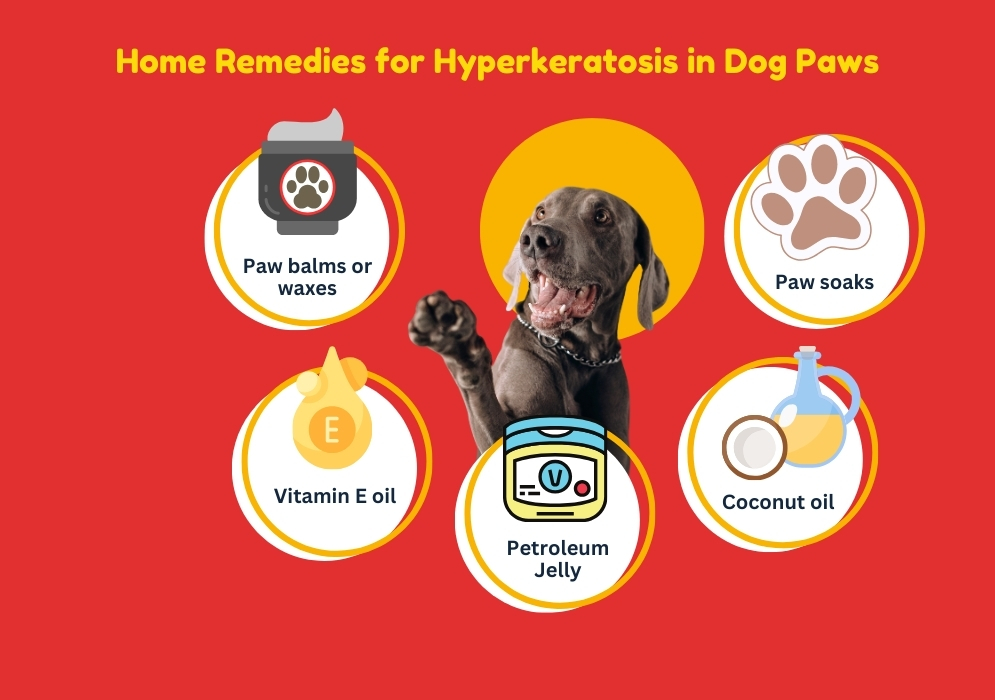
Veterinary treatment is essential for addressing hyperkeratosis in dogs. But if you want, you can also try out home remedies to provide additional support and relief. Here are some home remedies that you can easily prepare or find in your home.
- Paw soaks: Soaking your dog’s paws in a warm, gentle solution of Epsom salts or diluted apple cider vinegar can help soften and remove excess keratin buildup.
- Coconut oil or petroleum jelly: Applying a thin layer of coconut oil or petroleum jelly to the affected areas can help moisturize and soften the hyperkeratotic patches.
- Vitamin E oil: Massaging vitamin E oil into the affected areas can provide soothing relief and promote healing.
- Paw balms or waxes: There are various waxes and paw balms and waxes available that can help protect and condition your dog’s paws, potentially reducing the risk of hyperkeratosis.
Remember, while home remedies can be helpful, they should never replace professional veterinary treatment. So, you should always ask your veterinarian first before trying any new remedies or treatments.
Hyperkeratosis in dog paws can be a frustrating and uncomfortable condition for both you and your furry companion. However, the condition can be managed effectively if you take your dog to the veterinarian as soon as you notice any small signs of hyperkeratosis. You can also prevent the condition from recurring by caring for your dog’s paws regularly.






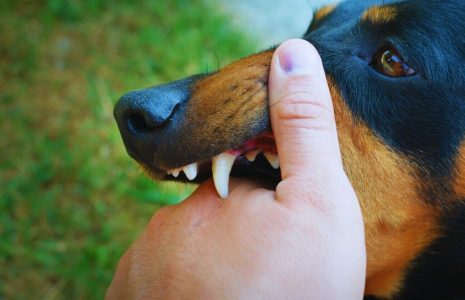

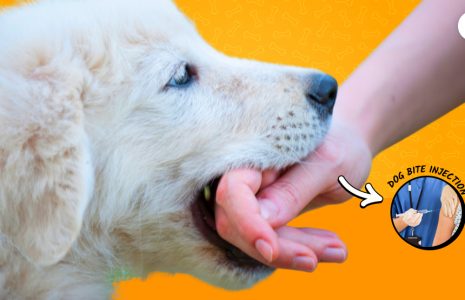
Leave A Comment